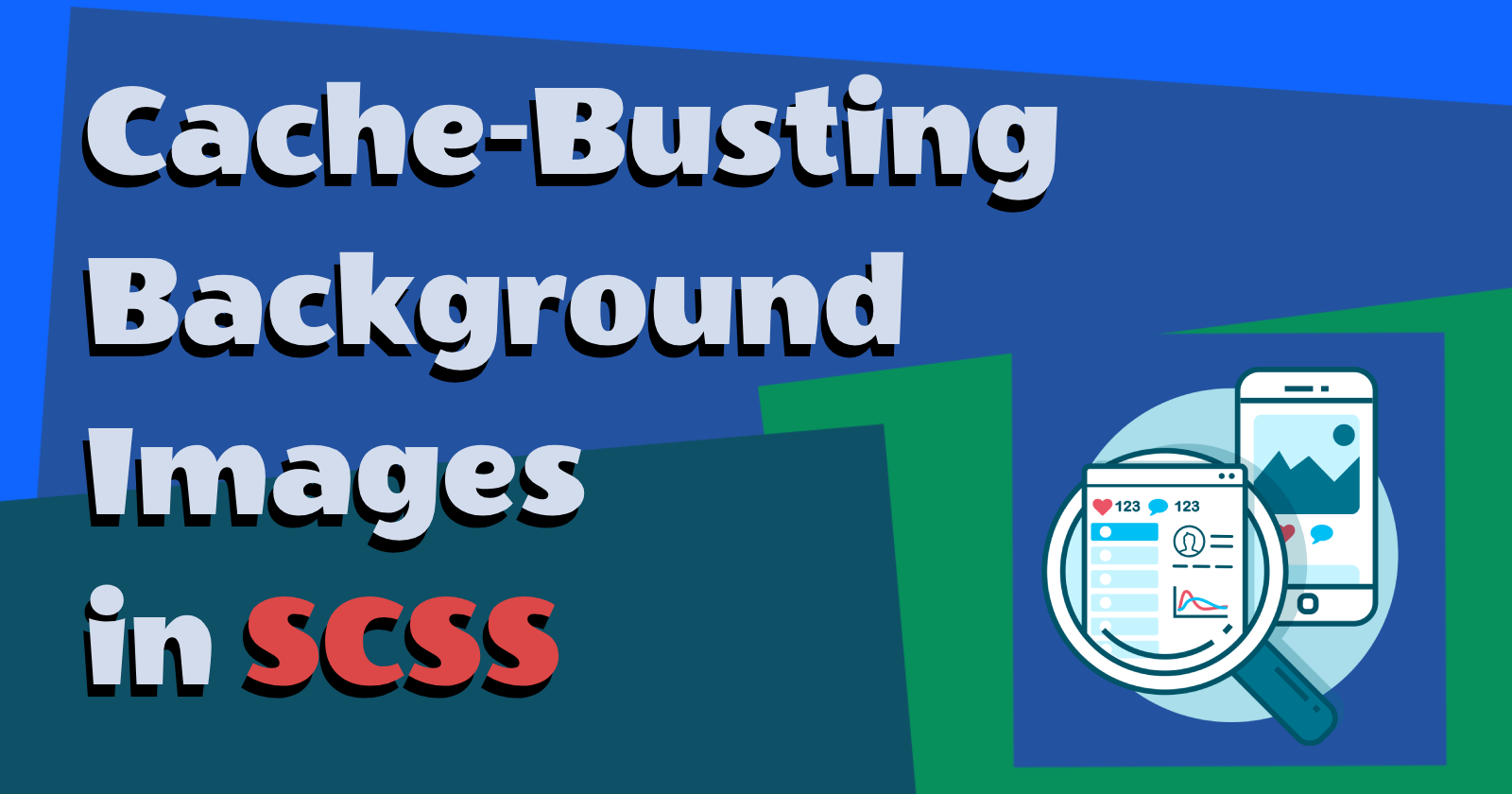Cache-Busting Background Images in SCSS
 Serhat Bek
Serhat Bek
Caching is a common practice browsers use to store resources locally, enhancing load times. However, it can become problematic when developers make updates to images. Without cache-busting, users might continue to view outdated images from their local cache. This is where cache-busting comes into play. Cache-busting is a technique employed to overcome browser caching and guarantee that users always receive the most recent version of assets. In this article, we'll explore the significance of cache-busting for background images and introduce a handy SCSS mixin for implementing it effectively.
Introducing the SCSS Mixin
$verId: unique_id();
@mixin cacheBustBgImages($urls...) {
$backgroundImages: ();
@each $url in $urls {
$backgroundImages: append(
$backgroundImages,
url('#{$url}?v=#{$verId}'),
comma
);
}
background-image: $backgroundImages;
}
We can cache-bust our single or multiple background images with this mixin. Let's go over it in detail and explore the implementation of this SCSS mixin in 7 steps:
- Unique Identifier
- Mixin Definition
- Variable Initialization
- Loop through URLs
- Cache Busting
- Final Property
- Implementing Cache-Busting
Unique Identifier
$verId: unique_id();
Adds a unique identifier ($verId) generated by the unique_id() function. This identifier is appended to each background image URL as a query parameter, ensuring that the browser recognizes the updated versions of the images.
Mixin Definition
$verId: unique_id();
@mixin cacheBustBgImages($urls...) {
}
Defines a mixin named cacheBustBgImages that accepts a variable number of arguments representing background image URLs.
Variable Initialization
$verId: unique_id();
@mixin cacheBustBgImages($urls...) {
$backgroundImages: ();
}
Initializes an empty list ($backgroundImages) to store processed background image URLs.
Loop through URLs
$verId: unique_id();
@mixin cacheBustBgImages($urls...) {
$backgroundImages: ();
@each $url in $urls {
}
}
Initiates a loop to iterate through each URL passed to the mixin.
Cache Busting
$verId: unique_id();
@mixin cacheBustBgImages($urls...) {
$backgroundImages: ();
@each $url in $urls {
$backgroundImages: append(
$backgroundImages,
url('#{$url}?v=#{$verId}'),
comma
);
}
}
Appends each URL to the $backgroundImages list, adding a cache-busting query parameter (?v=#{$verId}) to ensure browser retrieval of the latest image version. The comma argument specifies that each URL should be separated by a comma.
Final Property
$verId: unique_id();
@mixin cacheBustBgImages($urls...) {
$backgroundImages: ();
@each $url in $urls {
$backgroundImages: append(
$backgroundImages,
url('#{$url}?v=#{$verId}'),
comma
);
}
background-image: $backgroundImages;
}
Sets the background-image property using the list of processed background images.
Implementing Cache-Busting
To utilize this mixin, include it in your SCSS and use it wherever background images need cache-busting:
.hero {
@include cacheBustBgImages(
'asset/images/hero__banner-lines.png',
'asset/images/hero__banner-filter.jpg'
);
}
Conclusion
Cache-busting is a critical technique in frontend development, ensuring that users always experience the latest version of background images. The provided SCSS mixin simplifies the implementation of cache-busting, appending a version parameter to each image URL. By grasping the importance of cache-busting and employing the mixin in your projects, you can guarantee a seamless and up-to-date user experience.
Thank you for reading. If you find the article useful, please do not forget to like and comment so that others can access it. If you're on a generous day, you can even buy me a coffee. 🙃
Subscribe to my newsletter
Read articles from Serhat Bek directly inside your inbox. Subscribe to the newsletter, and don't miss out.
Written by

Serhat Bek
Serhat Bek
Hi! I'm a Frontend Developer from Istanbul. I like 🐈 cats, 🌱 plants, 🎵 music, 🎨 art, 📗 sci-fi and anything that empowers the imagination.